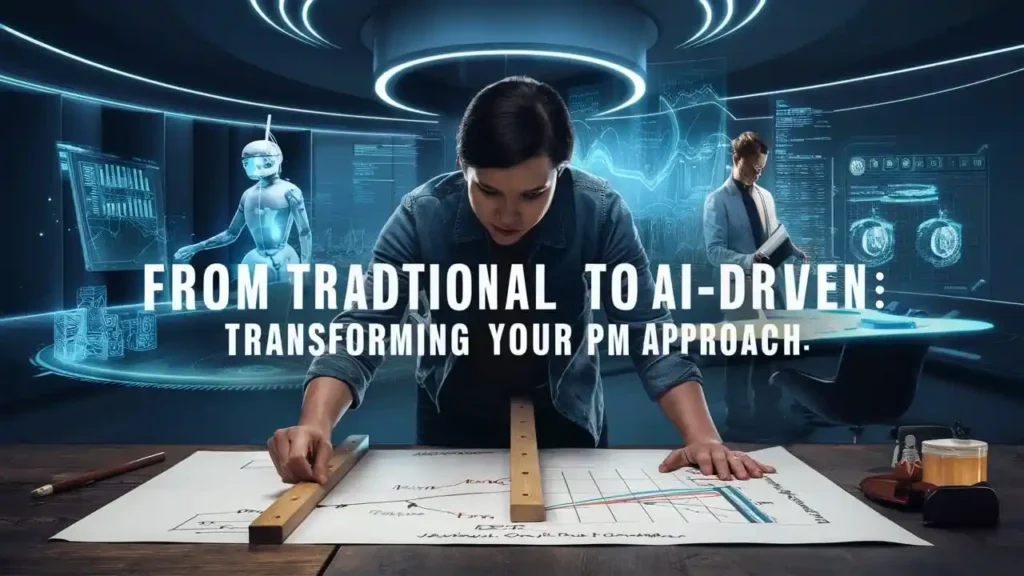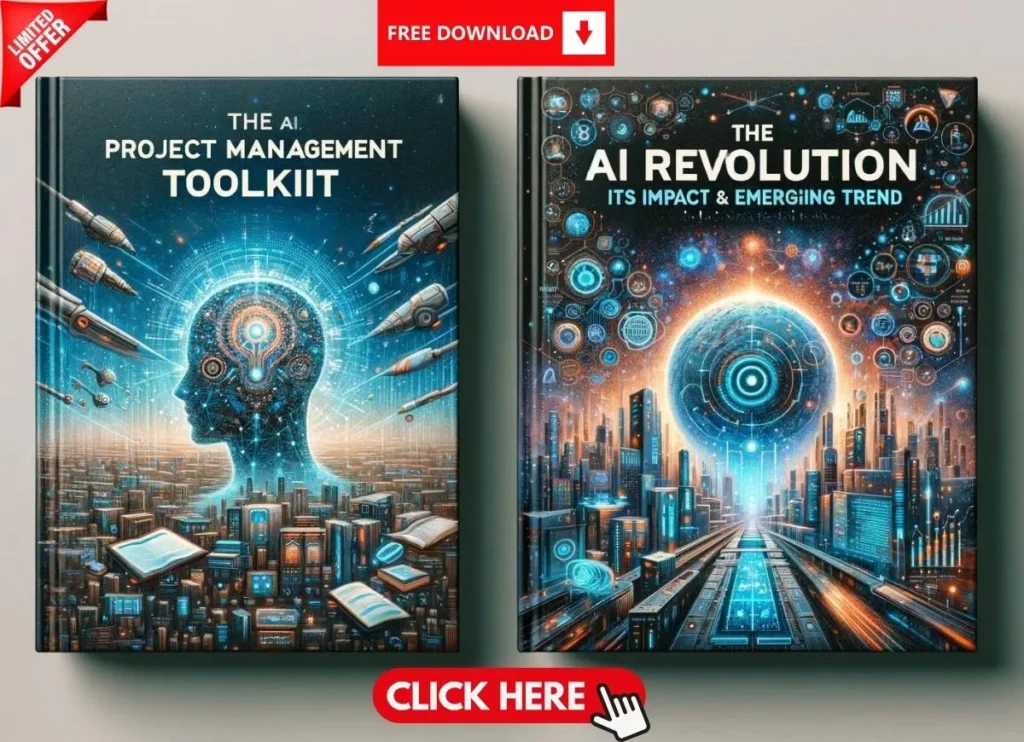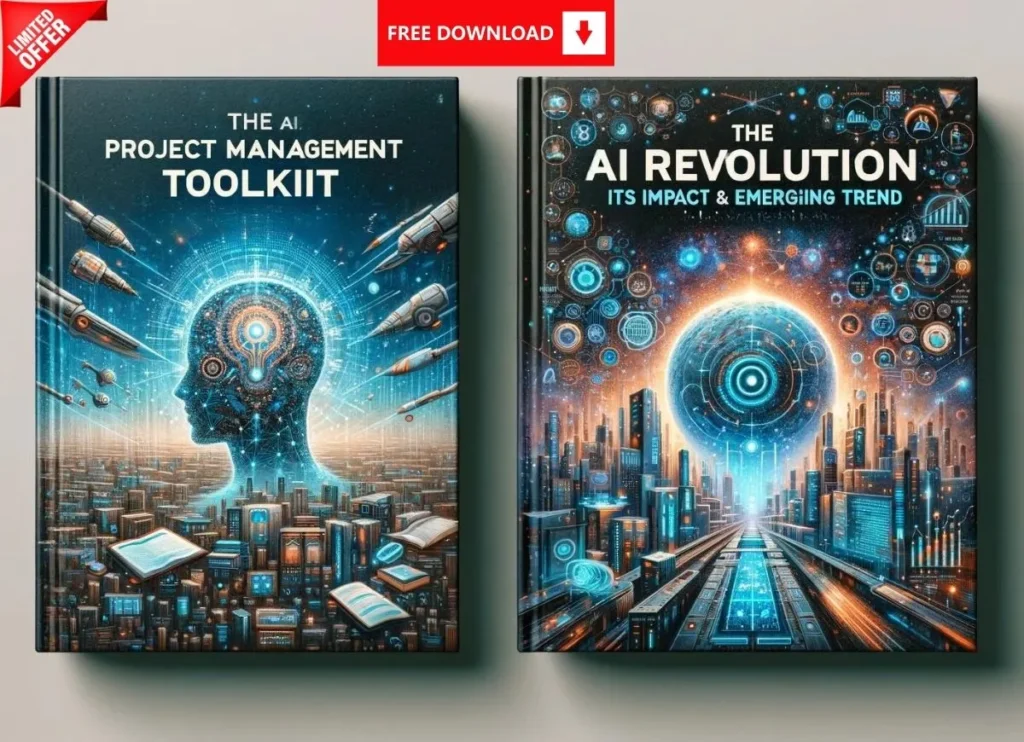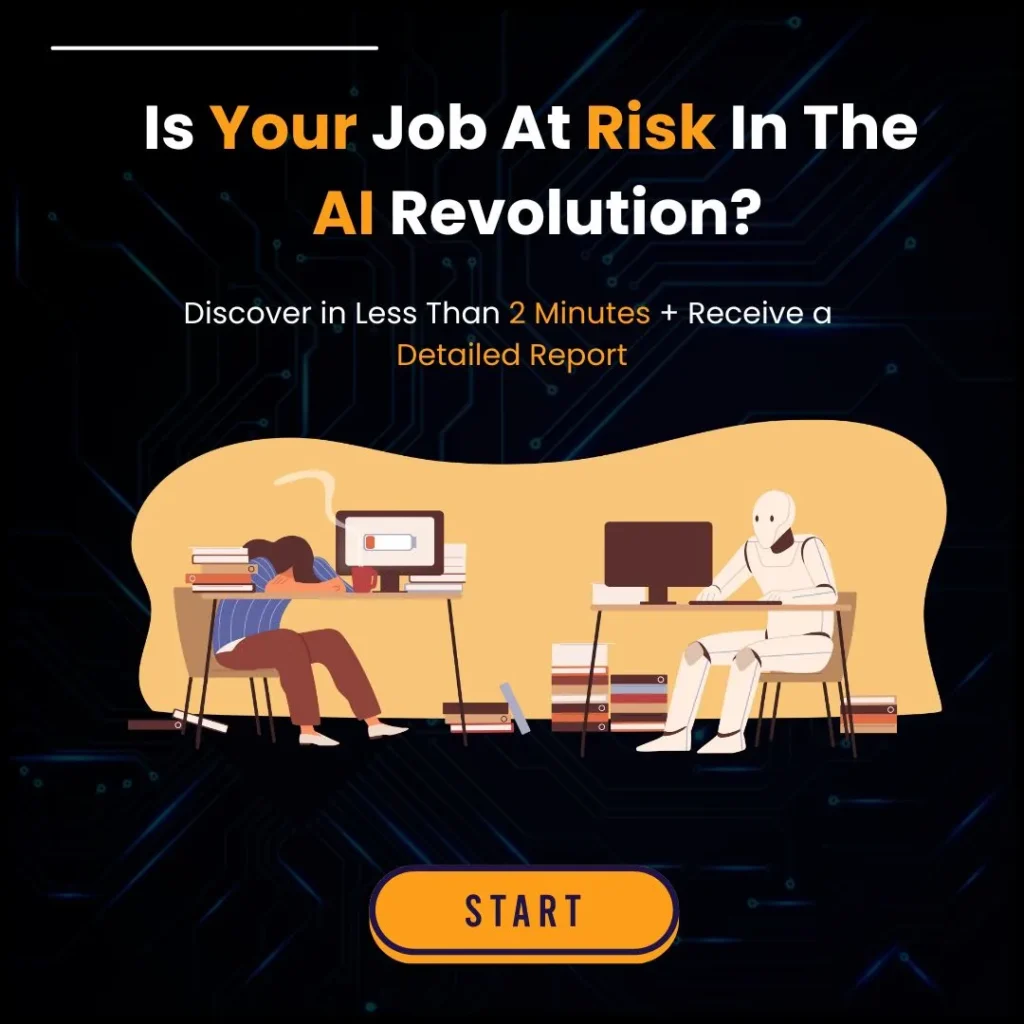1. Introduction: Why Transition from Traditional to AI-Driven Project Management?
As projects grow more complex and stakeholder demands escalate, Traditional Project Management methods can struggle to keep pace. In response, the industry is experiencing a shift toward AI-Driven Project Management—a data-centric, predictive, and often automated approach that harnesses artificial intelligence (AI) to tackle repetitive tasks, forecast risks, and streamline workflows. If you’re asking questions like:
- What is AI-driven project management?
- How does AI change traditional project management?
- Why should project managers adopt AI technologies?
This blog will serve as your comprehensive guide. We’ll explore the benefits of adopting AI in project management practices, compare traditional and AI-driven project management methods, and offer tangible steps for making the transition. If you’re eager to modernize your Project Management Approaches and maintain a competitive edge, read on.
According to a recent PMI (Project Management Institute) report, over 80% of high-performing organizations plan to integrate AI tools into their project workflows within the next five years. This isn’t just a tech trend; it’s a practical evolution designed to address common pitfalls in planning, resourcing, and execution. Whether you’re managing a small local team or a global, cross-functional initiative, AI can revolutionize the way you manage tasks, timelines, and budgets.
2. Understanding Traditional Project Management
Before we can appreciate the Transforming Project Management landscape, let’s establish what we mean by “traditional” approaches. Traditional Project Management often relies on linear, stage-gate methodologies like Waterfall, where each phase—requirements, design, development, testing, deployment—must be completed before moving to the next. This approach offers structure and clarity, especially when:
- Project scope is relatively fixed.
- The end deliverables are well-defined from the outset.
- Risks and changes are minimal or can be accounted for in a buffer.
Key Characteristics of Traditional PM
- Sequential Phases
Waterfall-based projects follow a rigid sequence, leaving limited room for mid-project changes. - Heavy Documentation
Large volumes of project documentation (e.g., charters, Gantt charts) ensure clarity but can be time-consuming. - Predictive Planning
Schedules and budgets are forecast well in advance; any significant scope change can disrupt the entire plan. - Manual Monitoring
Progress tracking often involves manual updates to spreadsheets or project management software, which can be prone to error.
Despite its strengths in stable, predictable environments, Traditional Project Management can falter when facing rapid change, complex dependencies, or evolving stakeholder expectations. That’s where AI in Project Management starts to make a difference, particularly when combined with more iterative or Agile approaches.
3. What Is AI-Driven Project Management?
AI-Driven Project Management applies artificial intelligence, data analytics, and often machine learning algorithms to streamline and optimize the entire project lifecycle. Instead of relying solely on human input for scheduling, resource allocation, and risk assessment, AI-based tools can:
- Analyze historical project data to predict outcomes.
- Automate repetitive tasks like scheduling meetings or updating statuses.
- Offer real-time insights on resource utilization, budget consumption, and emerging risks.
- Adapt to changes or disruptions faster than traditional manual processes.
Hallmarks of AI-Driven PM
- Predictive Analytics
Machine learning models crunch vast datasets to identify trends, helping you plan more accurately. - Automated Task Assignment
AI algorithms match tasks to the right team members based on skill sets, availability, and historical performance. - Iterative Feedback
AI systems improve over time, refining their forecasts and optimization strategies with each completed project or sprint. - Data-Driven Decision-Making
Real-time dashboards present crucial metrics, enabling informed, immediate decisions without guesswork.
It’s important to note that AI-Driven Project Management is not a single methodology but rather a tech-enabled enhancement you can overlay on frameworks like Agile, Scrum, Kanban, or even Waterfall. Ultimately, the goal is to remove guesswork, reduce inefficiencies, and automate administrative burdens.
4. Key Differences: Traditional vs. AI-Enhanced PM
Aspect | Traditional PM | AI-Driven PM |
Approach | Predominantly linear (e.g., Waterfall) or incremental (Agile). | Enhanced by algorithms, data analytics, and automated workflows. |
Decision-Making | Relies heavily on PM’s experience, intuition, and manual data analysis. | Informed by AI insights, predictive models, and real-time analytics. |
Task Allocation | Often manual, based on resource calendars and PM’s judgment. | Automated, leveraging machine learning to match skills, availability, etc. |
Risk Management | Reactive; identified through manual logs or after issues arise. | Proactive; AI flags potential risks early using patterns in historical data. |
Reporting & Monitoring | Manual status updates, static Gantt charts, weekly progress meetings. | Dynamic dashboards, automated alerts, and AI-generated status summaries. |
Adaptability | Change can be costly or disruptive, particularly in Waterfall models. | Agile to changes; AI-driven insights help reallocate resources and adjust plans quickly. |
As you can see, the biggest shift is toward proactivity, data-driven analysis, and rapid adaptability—transformations that help project managers deliver better outcomes faster.
5. Core Benefits of Adopting AI in Project Management Practices
The benefits of adopting AI in project management practices go far beyond just saving time. Let’s examine the value it brings to each stage of the project lifecycle:
- Scoping & Planning
- Data-Backed Estimates: AI uses historical data to generate more accurate timelines and budgets.
- Scenario Analysis: Predictive models can assess “what-if” scenarios, supporting better stakeholder communication.
- Execution & Monitoring
- Real-Time Visibility: AI-driven dashboards update automatically, giving you a live window into project health.
- Instant Alerts: Algorithms flag anomalies like schedule slippage or cost overruns, sometimes before they even occur.
- Resource Management
- Automated Allocation: Tools can auto-assign tasks to individuals or teams best suited for the job.
- Overload Prevention: Systems monitor team workload, alerting you before resource burnout becomes an issue.
- Risk Management
- Early Warning Systems: Machine learning analyzes leading indicators (like bug counts or vendor delays) and alerts the PM to possible risks.
- Dynamic Reallocation: If a critical team member is unavailable, AI can reshuffle resources to minimize downtime.
- Reporting & Stakeholder Engagement
- Automated Reports: Weekly or monthly status updates can be generated and distributed automatically.
- Predictive Insights: Stakeholders get forward-looking metrics—like projected completion dates—rather than just historical data.
By offering predictive analytics, automated task assignment, and sophisticated risk management, AI delivers a level of accuracy and efficiency that even the best-run traditional approaches often struggle to match.
6. Predictive Analytics: The Secret Weapon of Modern PM
Predictive analytics is at the heart of Transforming Project Management with AI. Rather than retrospectively looking at what went wrong, you gain foresight into what could go wrong—and take preemptive action.
How Predictive Analytics Works in PM
- Data Collection: AI tools gather data from previous projects, capturing details like task durations, resource usage, risk events, and budget performance.
- Pattern Recognition: Machine learning algorithms spot correlations between factors (e.g., sudden staff shortages and project delays).
- Forecast Generation: The system uses these patterns to predict how your current project might unfold—estimating deadlines, possible risks, and budget usage.
- Continuous Update: As new data streams in (e.g., tasks being completed faster or slower than expected), the predictions refine themselves.
Real-World Impact
- More Accurate Estimates: Traditional teams often rely on best guesses; AI provides data-backed forecasts with smaller margins of error.
- Proactive Risk Mitigation: Instead of waiting for an issue to manifest (like a critical resource quitting), the PM can re-plan or cross-train others in advance.
- Transparent Stakeholder Communication: Clients and executives appreciate consistent, reality-based updates rather than overly optimistic plans.
Predictive analytics doesn’t replace a project manager’s intuition or leadership—it supplements it with powerful data, enabling a more holistic and forward-looking perspective.
7. Automated Task Assignment: A Game Changer
Another standout feature in AI-Driven Project Management is automated task assignment. Traditionally, the PM combs through skill sets, availability, and project requirements to decide who does what. This manual approach can be time-consuming and prone to subjective bias.
Key Advantages of Automated Task Assignment
- Skill Matching
AI algorithms analyze a team member’s past performance and competencies, aligning tasks with their strengths. - Balanced Workloads
The system ensures tasks are evenly distributed, reducing burnout and preventing resource underutilization. - Faster Onboarding
When a new project begins or a new team member joins, AI-driven processes slot them into tasks without needing lengthy planning sessions. - Scalability
For large organizations with multiple concurrent projects, automated assignment prevents confusion and scheduling conflicts.
Example in Practice
Consider a digital agency handling web development and content creation. AI-based platforms can:
- Identify that Developer A is more skilled in JavaScript frameworks, while Developer B is a better fit for back-end tasks in Python.
- Monitor each developer’s active workload to avoid over-commitment.
- Assign tasks instantly when a previous one is completed, maintaining optimal flow.
By removing these logistical headaches, project managers can spend more time strategizing, collaborating with stakeholders, and steering the project to successful completion.
8. Steps to Implement AI in Project Management Workflows
Transitioning from Traditional Project Management to an AI-driven approach can be daunting. Here are steps to implement AI in project management workflows without overwhelming your team:
- Assess Current Processes
- Document your existing workflows, pinpointing bottlenecks and repetitive tasks.
- Identify where manual oversight is highest, such as resource allocation or risk tracking.
- Define Objectives
- Are you looking to reduce project delays, improve budget accuracy, or enhance resource allocation?
- Clear goals help you choose the right tools and measure ROI effectively.
- Choose the Right Tools
- Evaluate platforms that specialize in your industry or project methodology (Waterfall vs. Agile + AI).
- Consider factors like user-friendliness, integration capabilities, and customization options.
- Pilot a Small Project
- Start with a low-risk or internal project where you can test AI features (predictive analytics, automated assignment) without jeopardizing major client deliverables.
- Gather feedback from the team and stakeholders on usability, accuracy, and overall satisfaction.
- Train Your Team
- Provide workshops and training sessions on AI fundamentals and the specific tools you’ve chosen.
- Encourage a culture of data-driven decision-making rather than gut-feel planning.
- Monitor & Optimize
- Use metrics like forecast accuracy, resource utilization, and stakeholder satisfaction to gauge the impact of AI.
- Tweak settings or switch features if certain AI-driven processes aren’t delivering the expected results.
- Scale Up
- Once the pilot project succeeds, gradually introduce AI to more complex or external-facing initiatives.
- Maintain robust change management to ensure team members remain engaged and supportive.
Following these steps ensures you methodically and thoughtfully integrate AI, minimizing disruptions and maximizing the benefits of adopting AI in project management practices.
9. Real-World Examples of AI Transforming Project Management
Still on the fence? Let’s look at some real-world examples of AI transforming project management across diverse sectors:
- Software Development Firm
- Challenge: Frequent missed deadlines due to poor estimation of task durations.
- AI Solution: Deployed an AI-driven scheduling tool using past sprints as training data.
- Outcome: Deadline accuracy improved by 25%, and resource utilization soared as the system auto-assigned developers based on their specializations.
- Construction & Engineering Company
- Challenge: Overruns in both budget and schedule due to unpredictable supply chain issues.
- AI Solution: Implemented predictive analytics on weather forecasts, supplier lead times, and labor availability.
- Outcome: Slashed cost overruns by 20%. The AI system flagged potential risk events (e.g., late supplier deliveries) weeks in advance, allowing timely contingency plans.
- Marketing & Advertising Agency
- Challenge: Team members felt overworked; managers struggled to fairly distribute tasks.
- AI Solution: Adopted an automated assignment platform that balanced tasks according to each team member’s workload, historical performance, and area of expertise.
- Outcome: Employee satisfaction rose, overtime hours dropped by 30%, and projects were consistently delivered without burning out the staff.
These success stories illustrate how AI helps organizations adapt faster, reduce waste, and ultimately deliver higher-quality results.
10. Challenges of Transitioning to AI in Project Management
While the upside is significant, what are the challenges of transitioning to AI in project management? Let’s look at some common hurdles:
- Resistance to Change
- Teams accustomed to manual methods might be hesitant to trust AI-driven decisions.
- Solution: Offer transparent training and highlight success metrics to build confidence.
- Data Quality & Availability
- AI is only as good as the data it ingests. Incomplete or inaccurate historical records can skew predictions.
- Solution: Clean and standardize data sources before implementing AI. If you lack data, start collecting it rigorously now.
- Integration Complexity
- Many organizations rely on multiple tools (e.g., CRM, ERP, time-tracking). AI solutions must sync seamlessly to be effective.
- Solution: Choose AI platforms designed to integrate easily with your existing tech stack and adopt APIs or custom connectors if needed.
- Initial Cost & ROI Concerns
- Licensing fees, software subscriptions, and training can be expensive.
- Solution: Conduct a pilot project with clear metrics. Proving smaller-scale successes often justifies broader, more expensive implementations.
- Ethical & Privacy Concerns
- AI can inadvertently expose sensitive data or create biases in resource allocation.
- Solution: Ensure compliance with data protection laws and audit AI algorithms for transparency and fairness.
Awareness of these challenges—and planning for them—can significantly smooth the journey from Traditional Project Management to an AI-centric model.
11. Best Practices for a Successful AI-Driven Transformation
To transition effectively and avoid potential pitfalls, consider these strategic best practices:
- Adopt a Phased Approach
- Implement AI gradually, focusing on one or two processes at a time (such as risk assessment or scheduling). This targeted strategy helps your team adapt without feeling overwhelmed.
- Engage Stakeholders Early
- Communicate the why behind the shift to AI. Share data showing how AI can eliminate menial tasks, empower employees, and enhance project outcomes.
- Combine AI with Agile Methodologies
- Marrying AI’s predictive power with iterative, feedback-driven frameworks (like Scrum or Kanban) can yield quicker wins. You can pivot rapidly based on real-time insights.
- Invest in Skill Development
- Upskill your team in data literacy and AI fundamentals. A well-informed team is more likely to embrace and optimize AI tools.
- Monitor KPIs & Celebrate Milestones
- Track success metrics—like reduced project delays, improved budget accuracy, or higher client satisfaction—and celebrate these wins publicly. This builds morale and further buy-in.
- Establish a Governance Model
- Clarify roles, responsibilities, and decision-making authority related to AI-based recommendations. Ensure human oversight remains strong, especially for critical project aspects.
By following these guidelines, you’ll create a robust framework where AI-driven project management can flourish, and your teams can confidently harness its potential.
12. Get a Structured Approach to AI-Driven PM
Ready to move beyond theory and bring AI into your day-to-day project workflows? A structured training or certification program can accelerate your progress, equipping you with the tools and know-how to navigate this transformative space successfully.
Why You Need This
- Guided Curriculum: Learn the nuances of AI in Project Management—from data preprocessing to real-time analytics—led by industry experts.
- Hands-On Experience: Work through practical labs and case studies that illustrate how to implement AI solutions in diverse project settings.
- Peer Networking: Interact with like-minded professionals, share best practices, and build a robust support network.
Click here to explore our Certificate in AI-Driven Project Management
Secure your spot in a program designed to bridge the gap between Traditional Project Management and the rapidly evolving world of AI-enhanced methodologies.
13. Conclusion: The Future of Project Management Is Here
Transitioning from Traditional to AI-Driven is more than a tech trend; it’s a fundamental shift in how we conceive, plan, and execute projects. By leveraging predictive analytics, automated task assignment, and continuous data-driven insights, project managers can anticipate issues before they become critical, allocate resources optimally, and deliver outcomes that exceed expectations.
Still, this evolution requires more than just new software—it calls for a cultural transformation, data literacy, and a willingness to adapt. Challenges like data quality, team buy-in, and integration complexity are real but manageable with the right strategy and leadership.
In a nutshell:
- What is AI-driven project management? It’s a methodology that uses AI to enhance every stage of project planning and execution, from risk management to team coordination.
- How does AI change traditional project management? By shifting from reactive, manual tasks to proactive, automated, and data-centric workflows.
- Why should project managers adopt AI technologies? For greater efficiency, accuracy, and stakeholder satisfaction—ultimately leading to better project outcomes.
- What are the challenges of transitioning to AI in project management? Organizational resistance, data integrity issues, integration hurdles, and ethical considerations can arise.
- Success stories of companies using AI in project management? Numerous organizations across software development, construction, marketing, and beyond have reported significant gains in schedule adherence, cost savings, and team morale.
As more companies realize the benefits of adopting AI in project management practices, those who lag behind risk becoming obsolete. With careful planning, targeted training, and a clear roadmap, you can start Transforming Project Management within your own organization—unlocking efficiency, predictability, and innovation at every turn.








